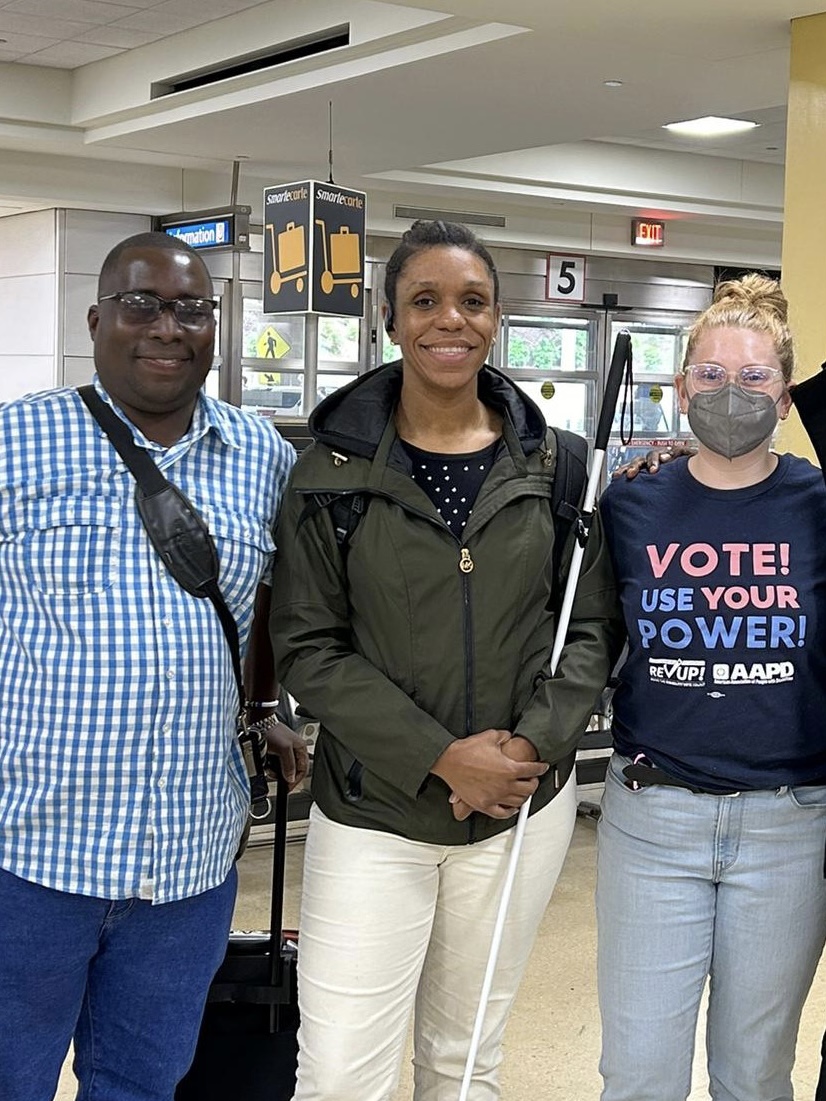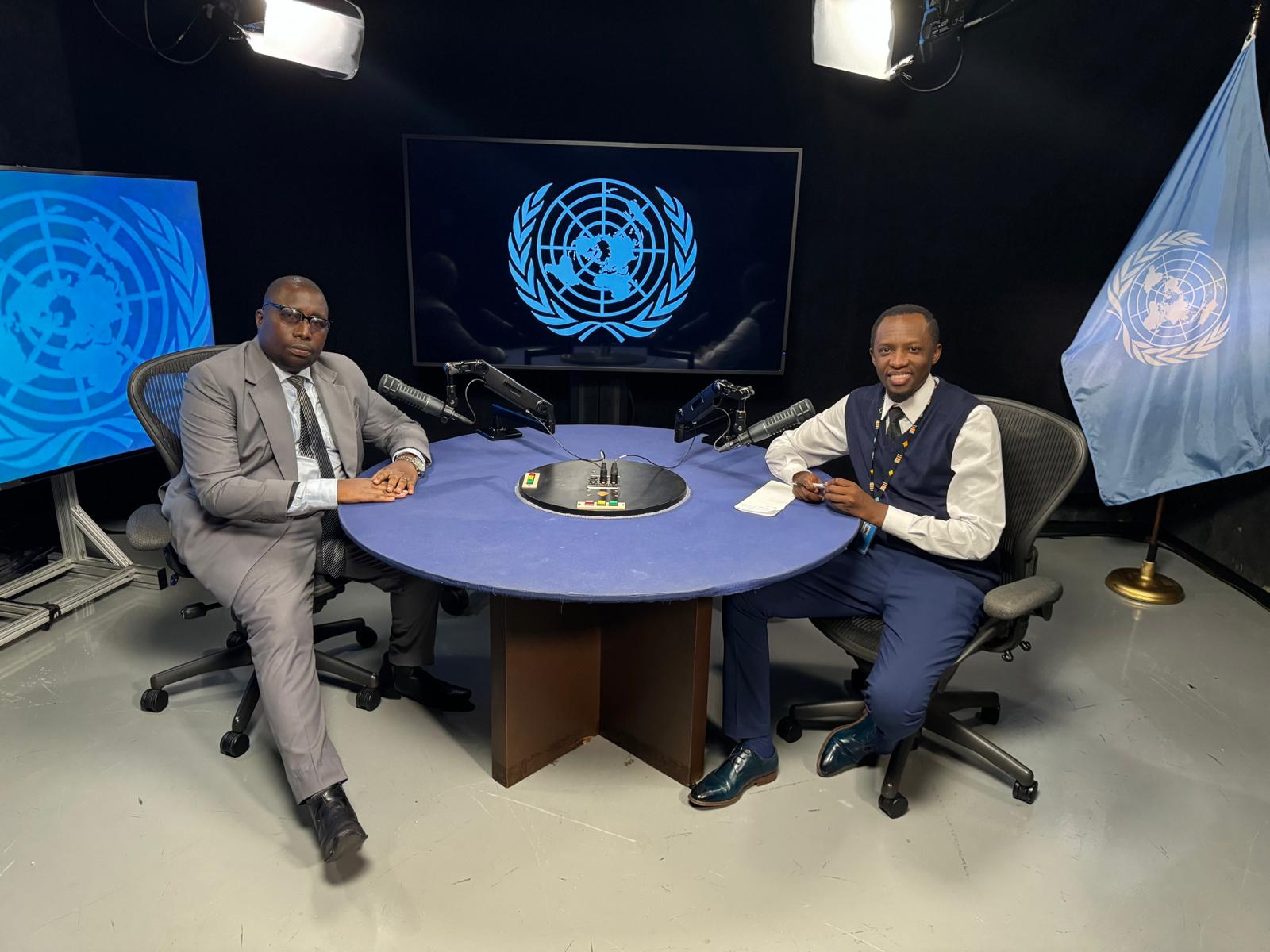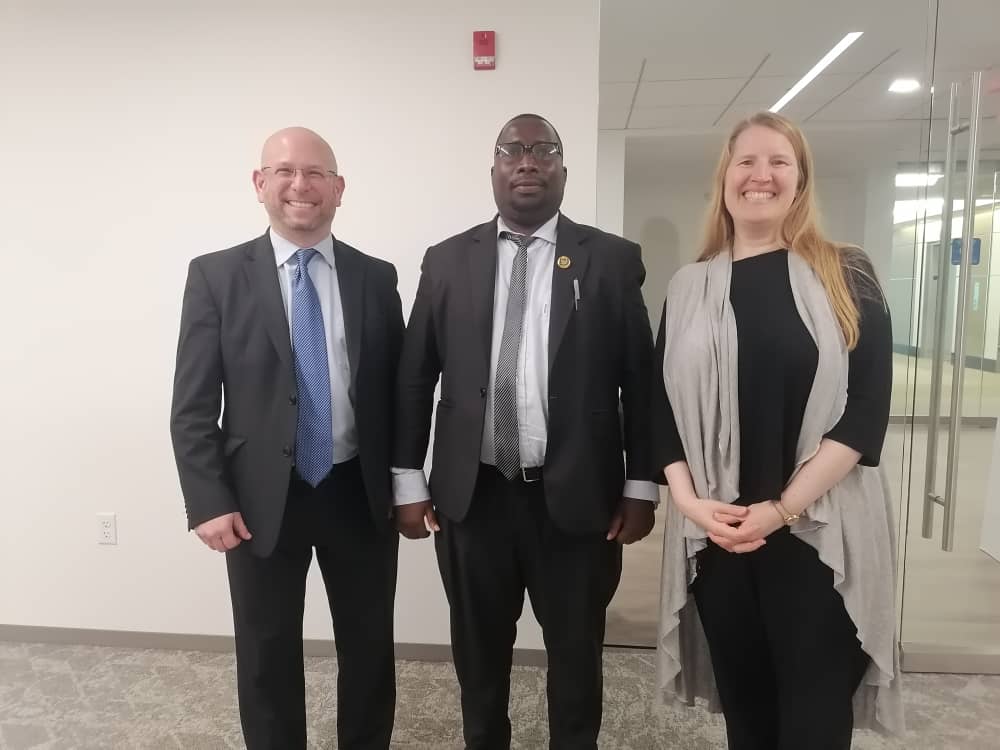My Journey to the United States to Learn Best Practices on Inclusive Alternative Dispute Resolution
Published: Jul 18, 2024
Country: Tanzania
Erick Elizeus Mukiza is a 2024 Fellow in the Professional Fellows Program on Inclusive Civic Engagement. This program is sponsored by the US Department of State’s Bureau of Educational and Cultural Affairs and is administered by the Institute for Community Inclusion (ICI) at the University of Massachusetts Boston in partnership with Humanity and Inclusion (HI). The following blog post was written by guest author Erick.
My experience in the US has ignited a journey of discovery about inclusive civic engagement. This experience began with a warm welcome at Boston Logan Airport by Dr. Heike Boeltzig-Brown and Christa Preston from the Professional Fellows Program.
Exciting Beginnings in Boston
The orientation event the next day was a fantastic start. I pitched my follow-on project to American disability rights leaders, which was both exciting and informative. A highlight of my time in Boston was visiting Harvard Law School on May 10, 2024. There, I met with Matthew “Hezzy” Smith, Esq., the Director of Advocacy Initiatives at the Harvard Law School Project on Disability. We discussed making Alternative Dispute Resolution (ADR) accessible for Tanzania’s Deaf community. The insights I gained were valuable and set a strong foundation for my project.

Discovering Washington, DC
On May 12, 2024, I flew to Washington, DC, and was welcomed by my host mentor, Jasmin Bailey, who is blind, along with her colleague, Alexia Kemerling. Jasmin works as the Operations Director and Alexia is the Rev Up Coalitions Coordinator at the American Association of People with Disabilities (AAPD).
Jasmin, who is a white cane user, was able to easily navigate our group while traveling in the DC area. She is a powerful illustration of how disability doesn't equate to inability. During my Fellowship placement, I was introduced to screen reading software that translates text to audio output on phone and laptop devices.
Starting work at AAPD on May 13, 2024, was another significant milestone. Jasmin introduced me to the supportive and enthusiastic AAPD team. On May 14, 2024, I had an enlightening meeting with Christine Liao, Senior Programs Director at AAPD. Christine, who is Deaf, taught me the importance of using appropriate terminology within disability communities, preferring terms like "Deaf" or "person who is hard of hearing" over "hearing impairment." The smooth communication with her, facilitated by Computer-Aided Real-Time Translation (CART), was a remarkable experience.

Learning at Gallaudet University
On May 15, 2024, visiting Gallaudet University with my host mentor, Jasmin, was another memorable highlight. Mr. Carrizales, a Deaf student ambassador, guided us around the university. This visit taught me that sign language is not the only method of communication for Deaf people. Technologies, such as captioning, typing functions, and CART offer diverse communication tools. Additionally, Gallaudet's architectural design enhances accessibility: wide spaces, wide sidewalks, and a "C"-shaped setup for classrooms allow all participants, deaf and hearing alike, to see each other, fostering better communication and inclusion.
Visiting the UN Headquarters
On May 17, 2024, I visited the UN Headquarters in New York and met with Anord Kayanda from UN News Kiswahili to discuss my project, which aligns with UN Sustainable Development Goal 16.3. The UN expressed significant interest in my project and pledged support to reach more people with disabilities in Tanzania. They recognize the benefits of ADR and the importance of disability etiquette outlined in the Convention on the Rights of Persons with Disabilities (CRPD).

Insights from Legal Experts
On May 20, 2024, I met Howard Rosenblum, a Deaf leader with over 30 years of experience in the US legal practice and the Chief Executive Officer of Deaf Equality in the US. His insights into empowering people with disabilities through mediation were inspiring. He expressed willingness to support our efforts in Tanzania and highlighted the importance of proper accommodations for Deaf students pursuing law.

The White House
On May 23, 2024, I was honored to be invited to the White House as a guest for the welcoming ceremony of President Dr. William Samoei Ruto of Kenya. The event underscored the importance of inclusion, with accommodations made for people with disabilities. The officials were very supportive, providing sighted assistance for Jasmin, offering a link to live captioning, and giving us a section closer to the stage of the ceremony. It was a fantastic experience for both of us.
Reflections and Future Applications
My first two weeks in America have been an extraordinary learning journey about inclusive civic engagement. Before coming to the US, I only knew sign language as the primary accommodation for the deaf and knew little about the needs of other people with disabilities. Now, I have learned about various accessibility options, including captions, visual descriptions, speaking slower, and a range of tools and technologies that will be invaluable back home.
I have discovered that modern technology bridges communication gaps for people with disabilities. The lessons on appropriate terminology, diverse communication methods, and the potential of ADR apply directly to my work in Tanzania. I will bring back these insights to improve accessibility and advocacy for the deaf and hard of hearing community. By integrating these practices, I aim to foster a more inclusive environment and empower individuals with disabilities to access justice and civic participation effectively.
 The Professional Fellows Program on Inclusive Civic Engagement
The Professional Fellows Program on Inclusive Civic Engagement